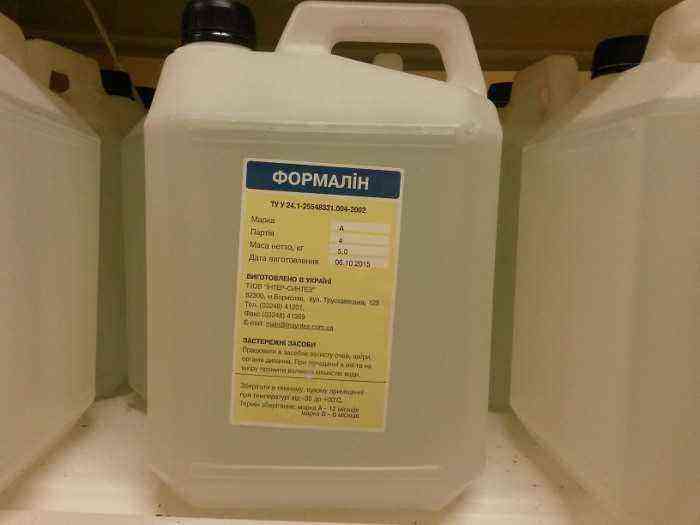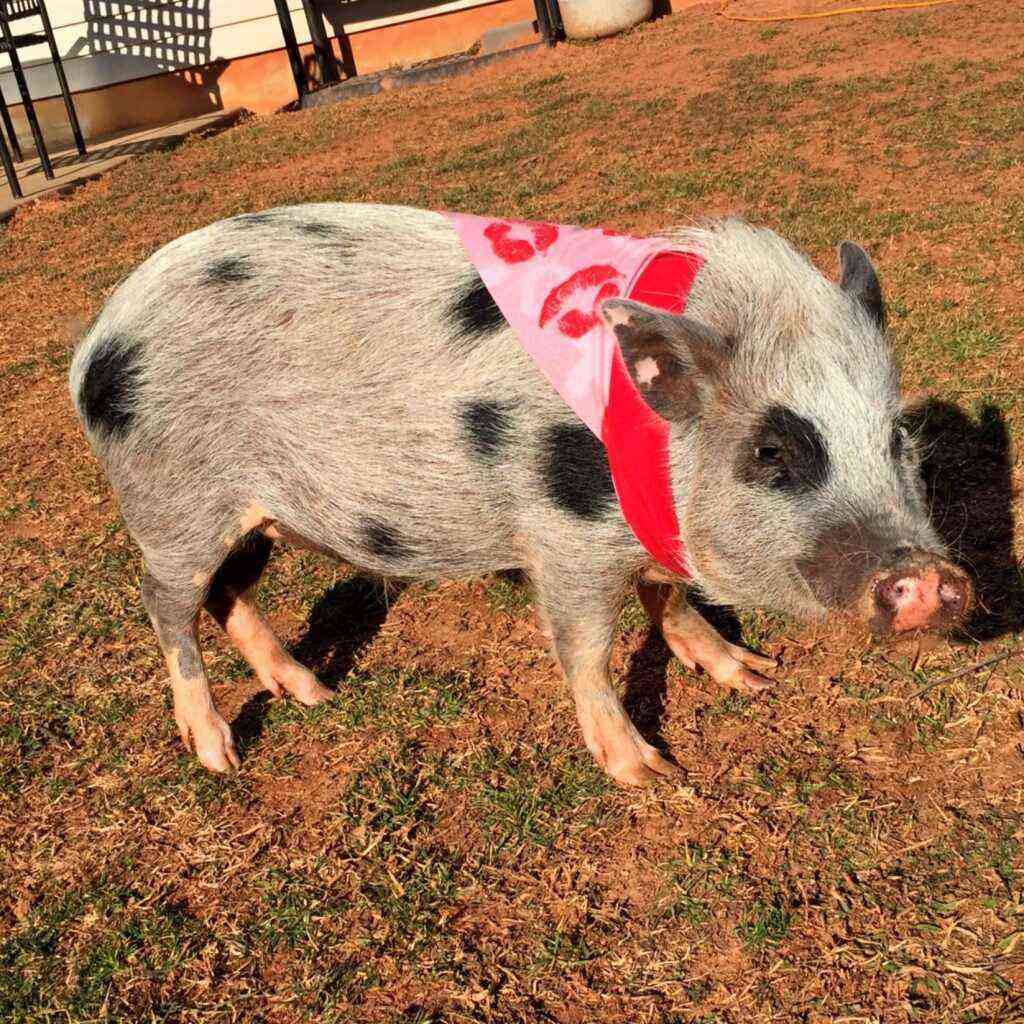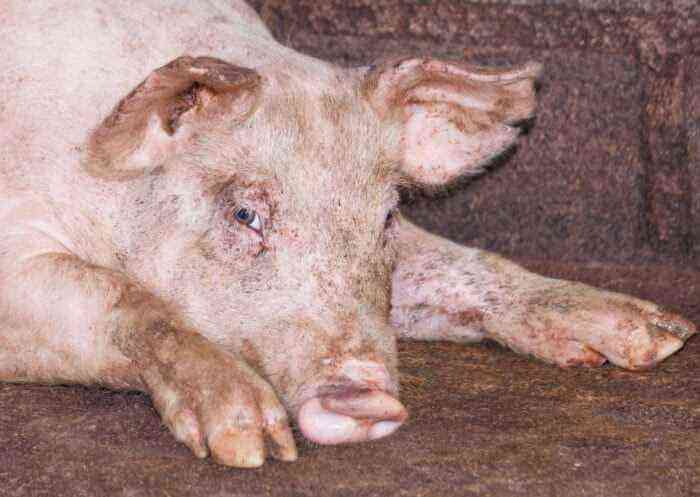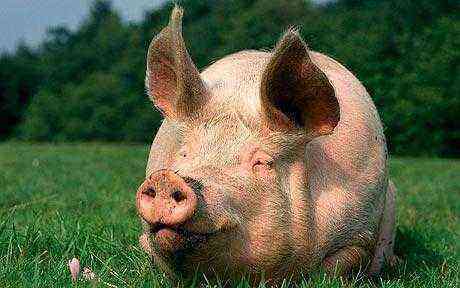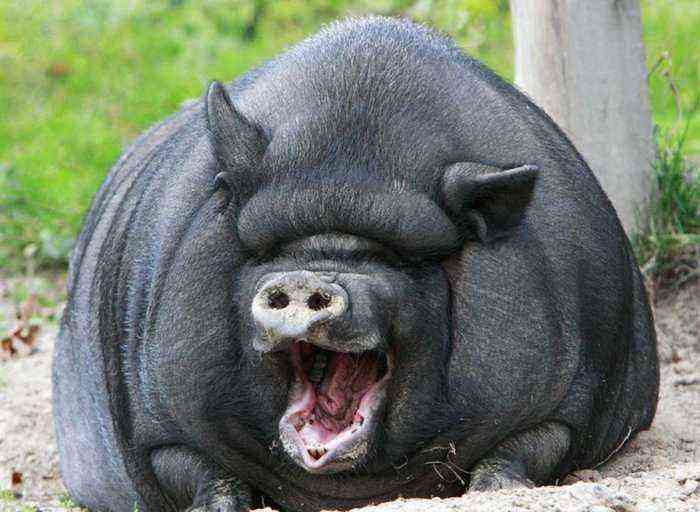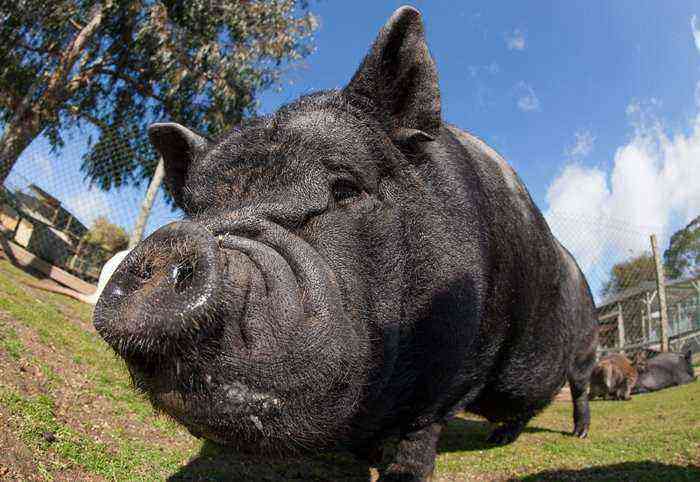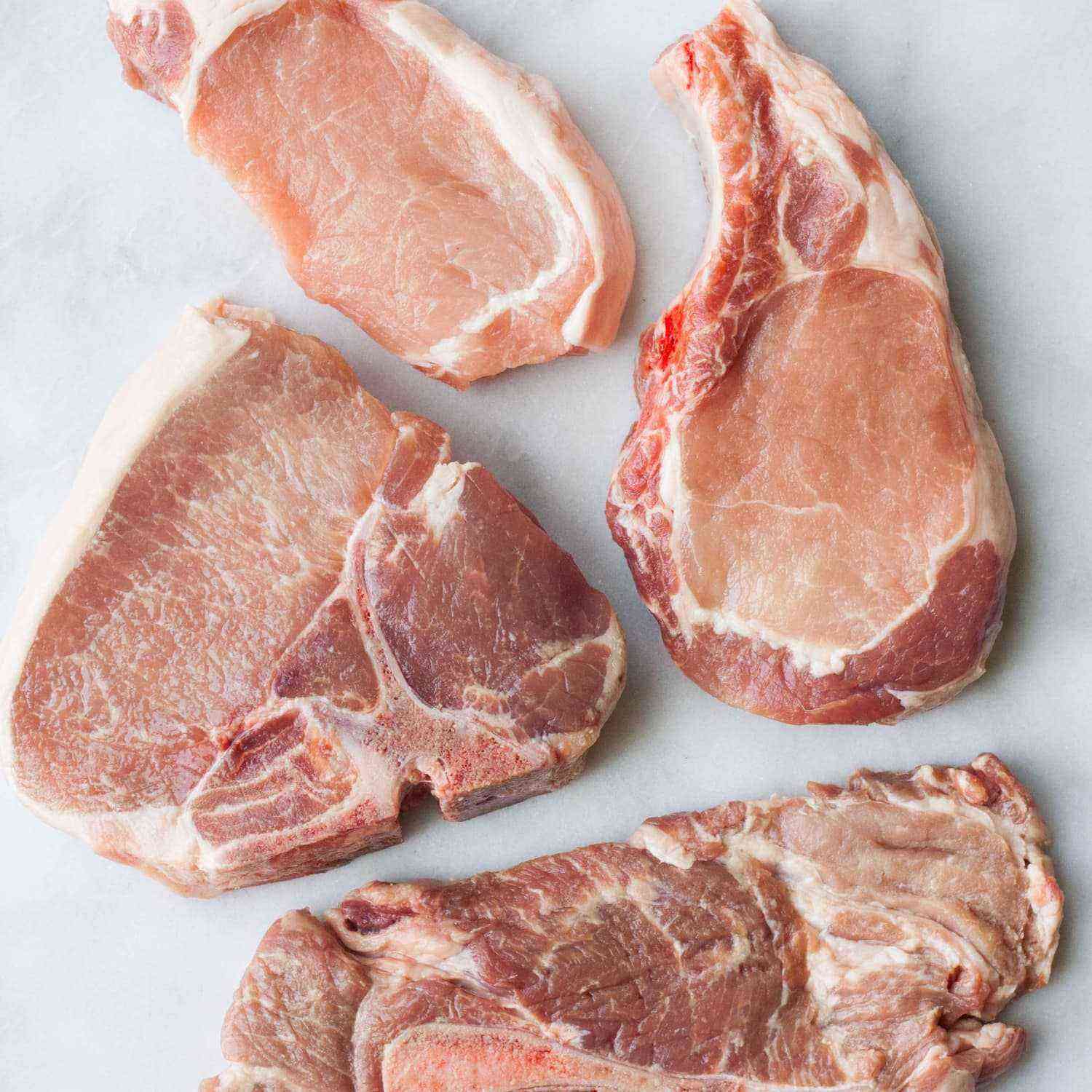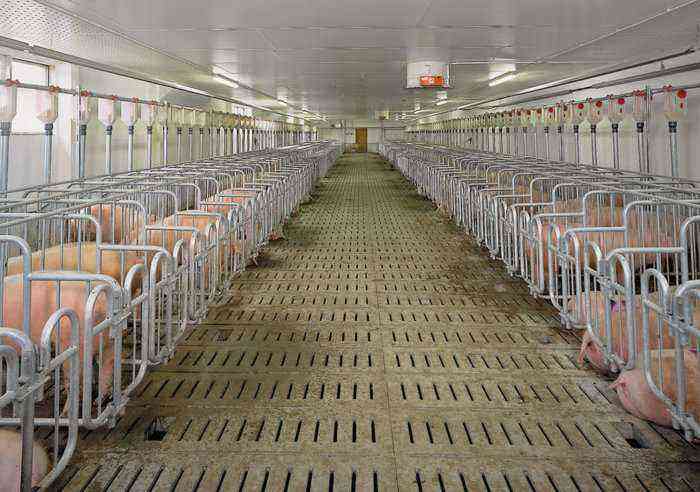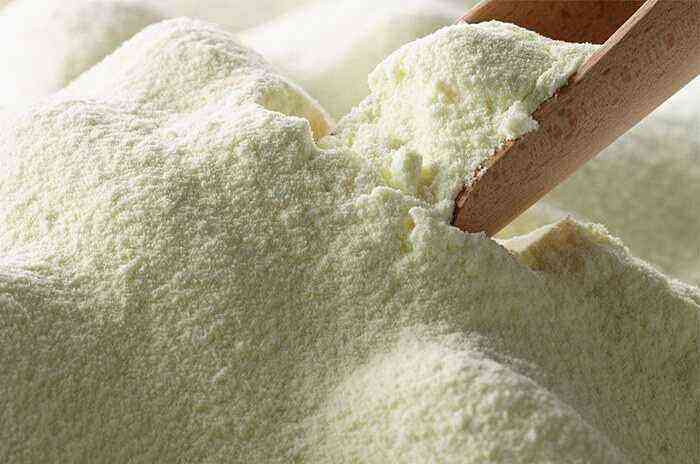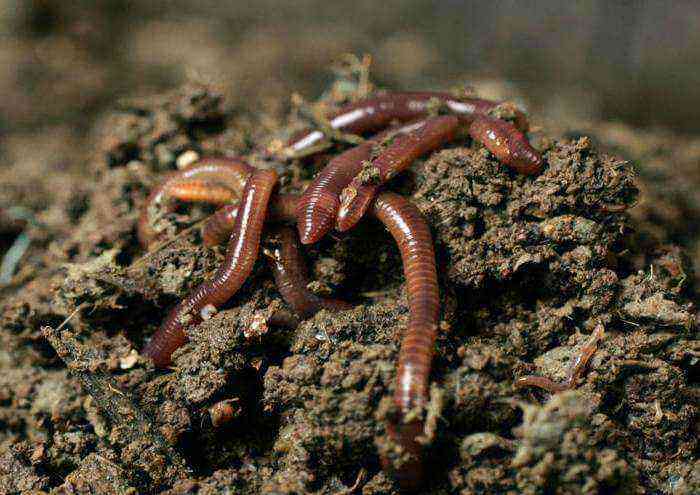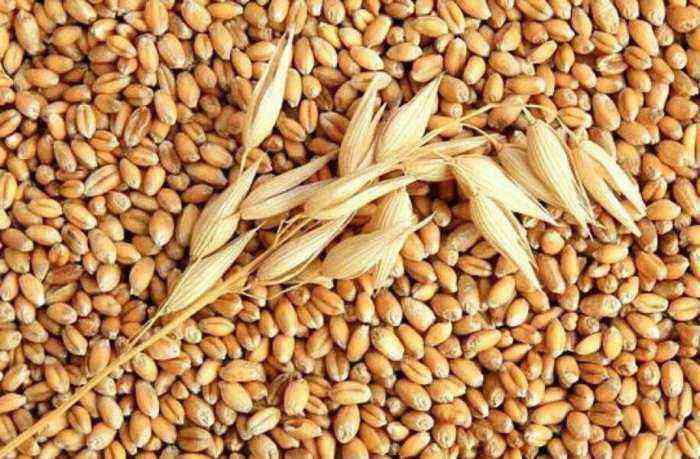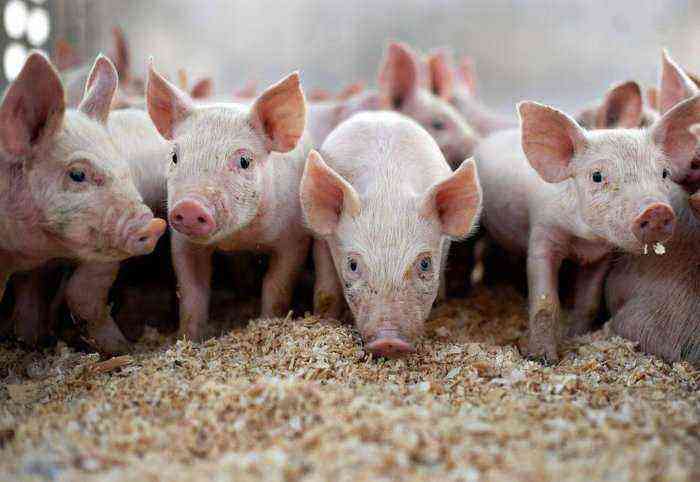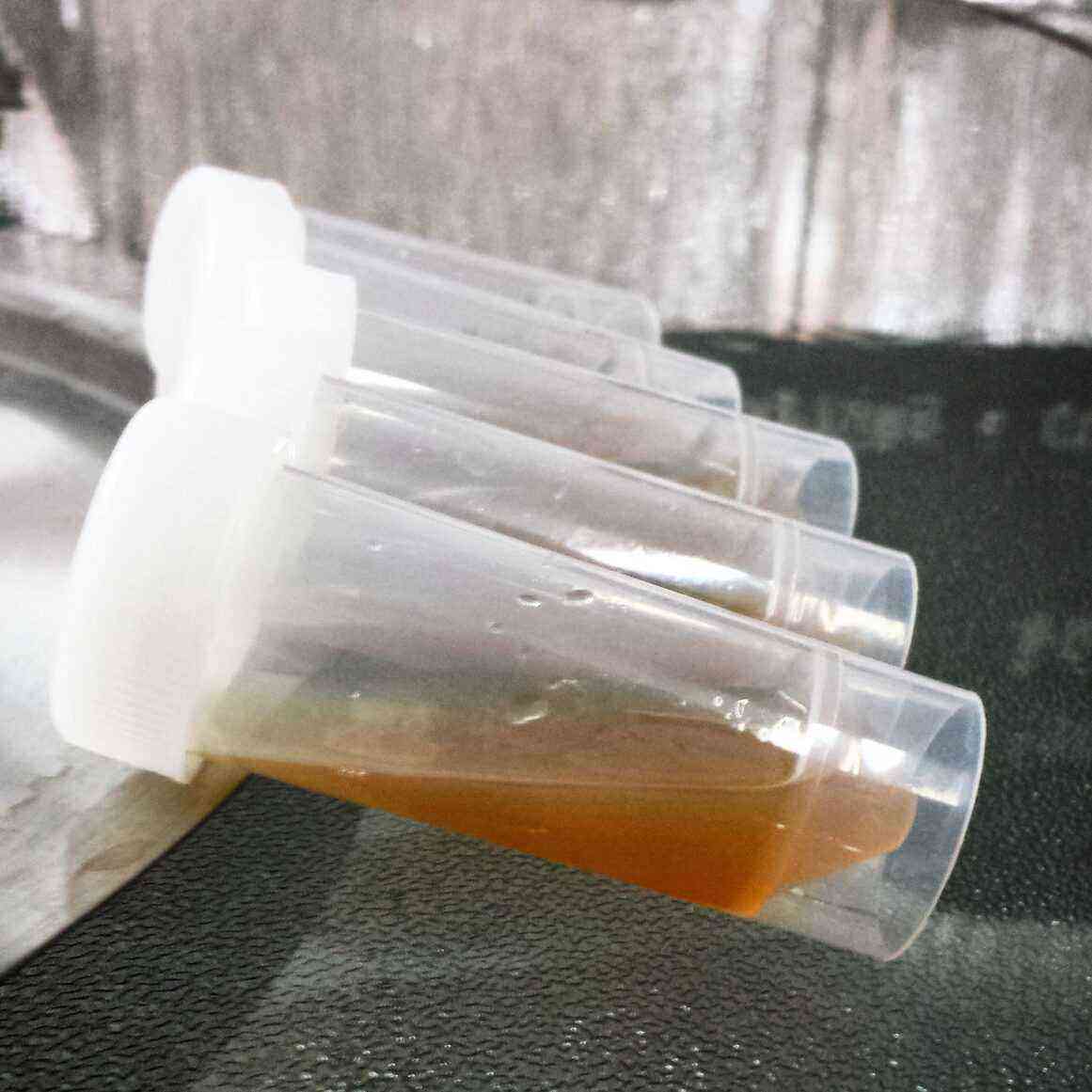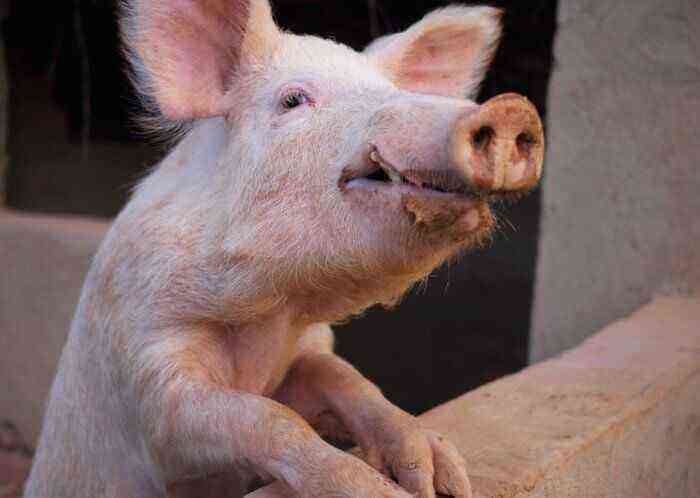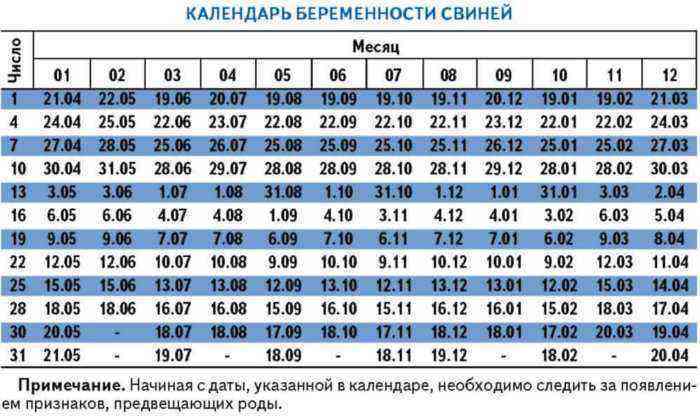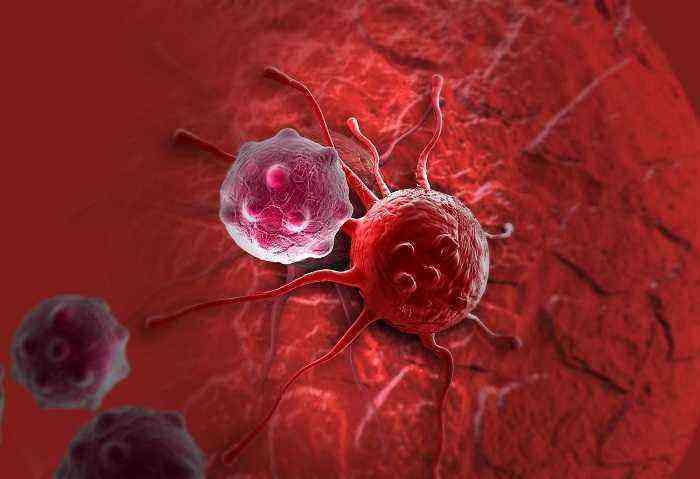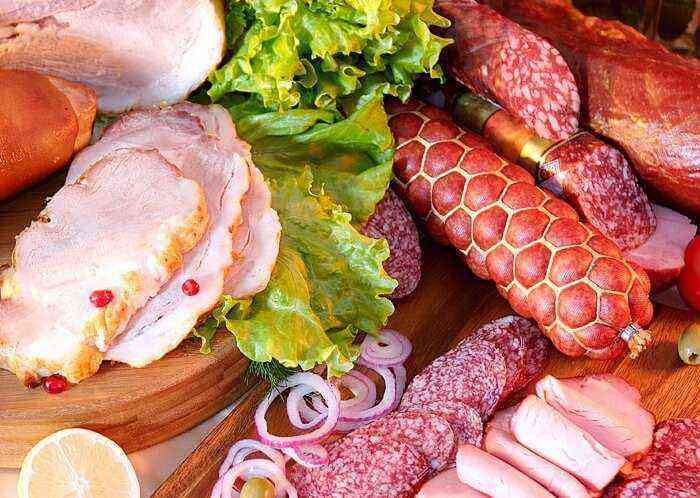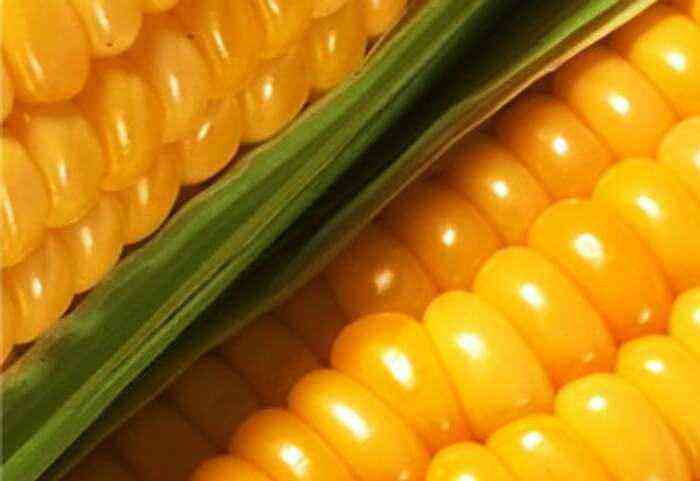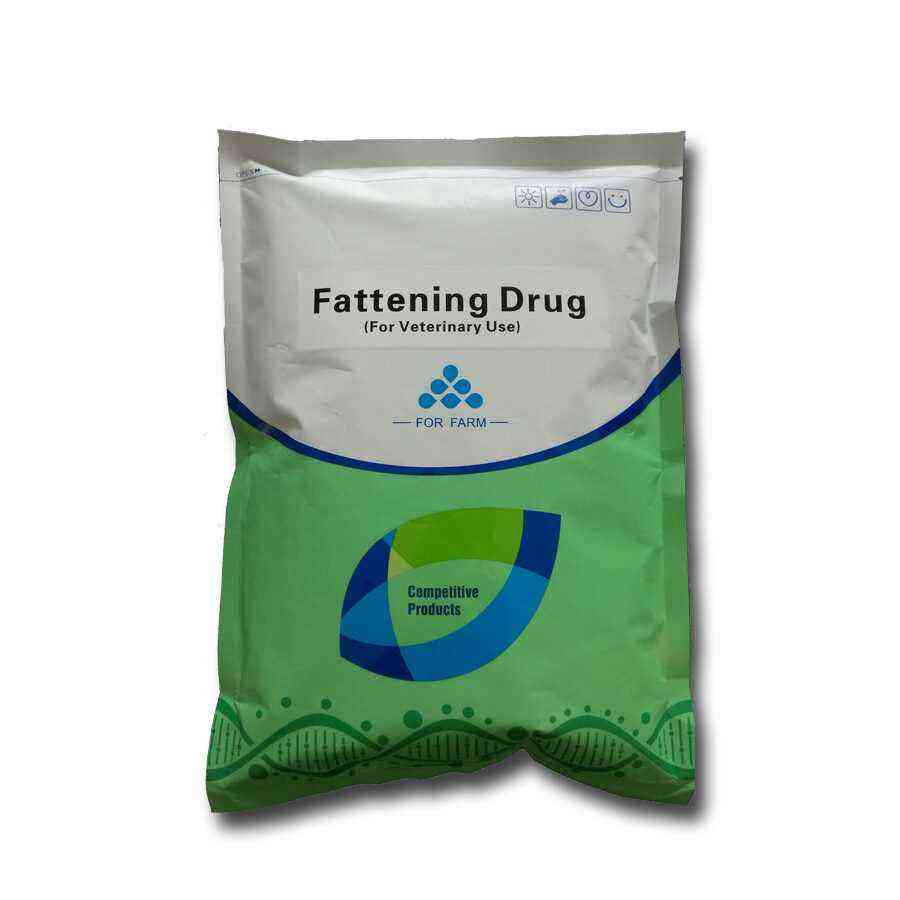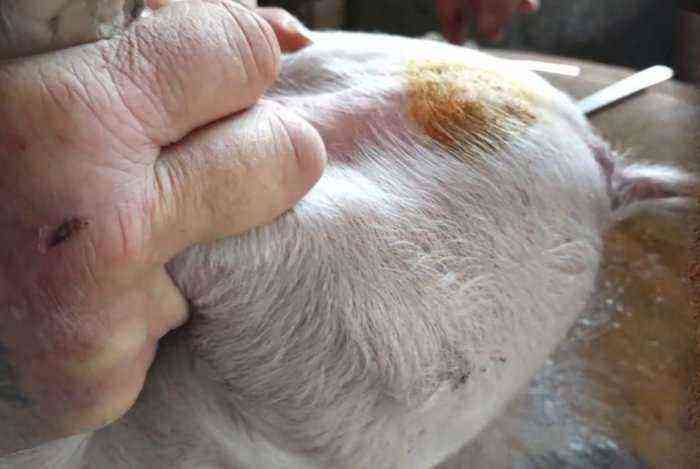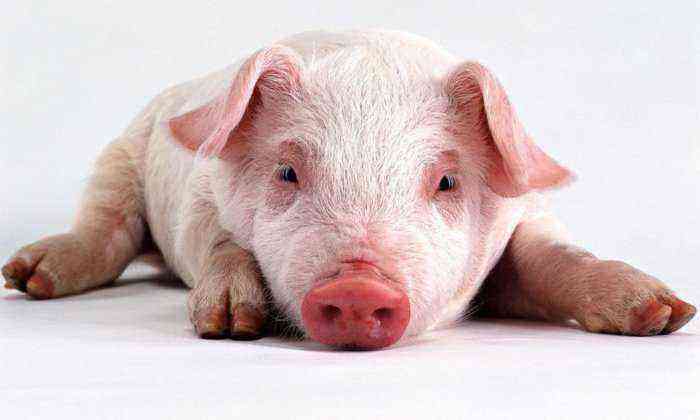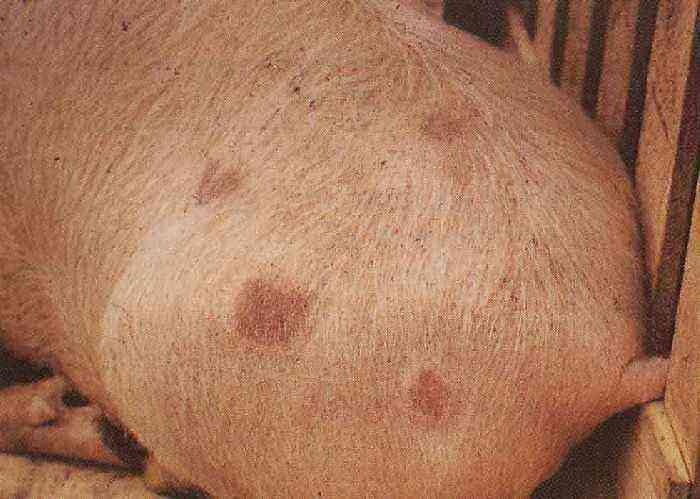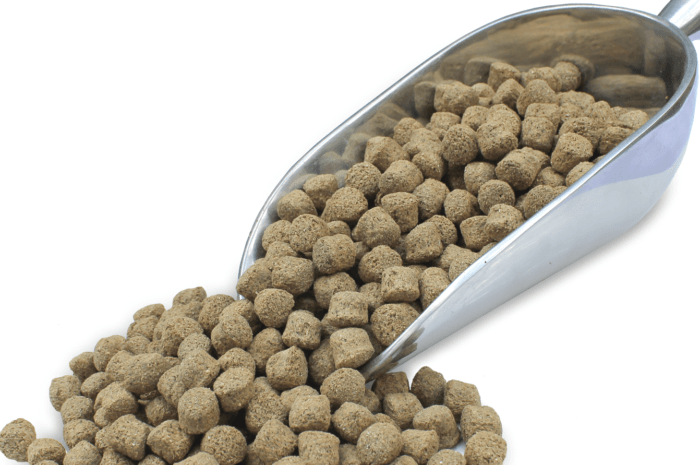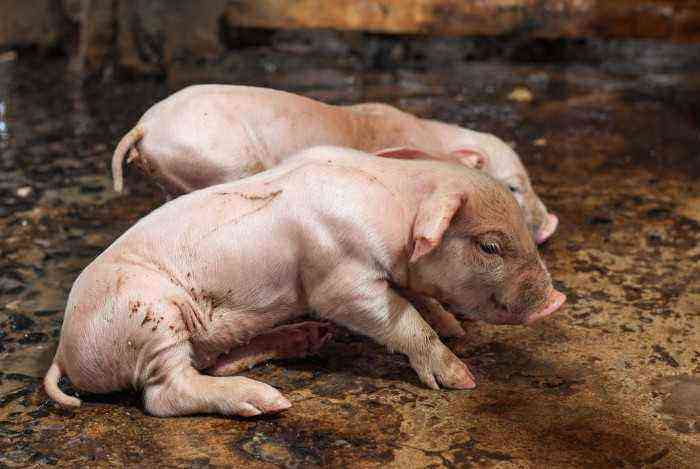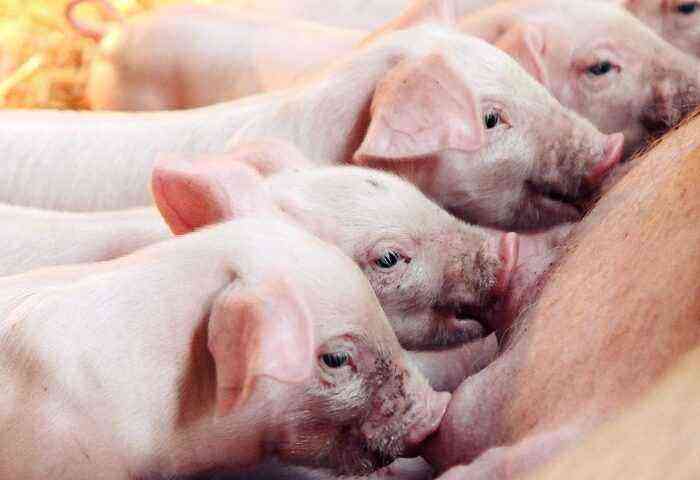Non-contagious diseases of pigs are those that are not transmitted from one individual to another. Such diseases can only pose a danger to a sick animal. It is important for a farmer to understand these ailments, to know how they manifest themselves, because most of them cause great damage to the farm. This article will focus on diseases of the digestive system, respiratory system and metabolic disorders in pigs, ailments that are in no way associated with infection.
Sick piglets
Characteristics and types
Pigs are susceptible to a wide variety of diseases that can cause great damage to the farm owner. Non-contagious diseases include those that are not caused by viruses, but by various disorders in the body. These include:
- Diseases of the digestive system of non-infectious etiology – poisoning, inflammatory processes in the intestines and stomach.
- Diseases of the respiratory system – pneumonia, bronchitis, bronchopneumonia.
- Metabolic disorders caused by a lack of vitamins and trace elements in the body of animals.
In the following, common diseases will be considered in order, which are not dangerous for the herd, but require prompt human intervention and treatment.
Gastroenteritis
This is a disease of the digestive tract, in which the stomach and intestines are affected. Most of all, piglets under the age of one month suffer from it. Their digestive system is not yet adapted and is vulnerable. The main reason for the development of gastroenteritis in young animals is the error in feeding:
- Giving low-quality (spoiled, moldy) or roughage.
- Feeding hot or too cold food.
- Drinking contaminated water.
- Abuse of dry food.
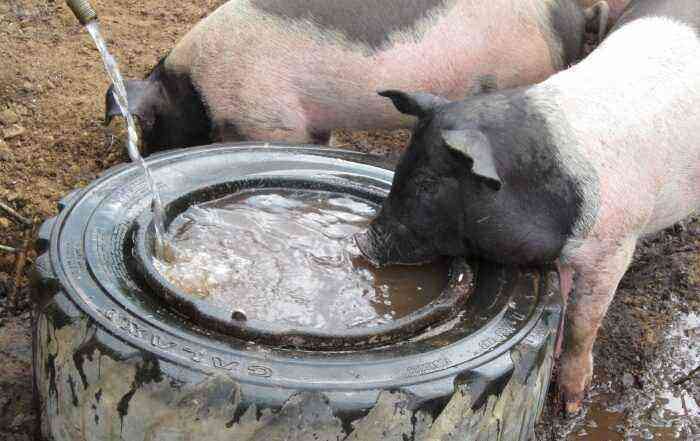
drinking contaminated water
Gastroenteritis of non-contagious etiology can also develop with dysbacteriosis. Consider the symptoms of the disease:
- Diarrhea.
- Vomiting.
- General oppression.
- Loss of appetite.
- Slight rise in temperature.
- Undigested food particles are found in the feces.
Attention! Before starting the treatment of gastroenteritis, it is necessary to exclude the involvement of the virus in the development of the disease, as there is also viral gastroenteritis.
If it is established that a viral infection did not cause indigestion, the piglet is kept on a starvation diet for a day. Then, easily digestible food is introduced into his diet, given in a warm form. Treatment includes the use of:
- Antimicrobial or antibacterial drugs.
- Sorbents.
- Globulin.
- Vitamins.
Reference. The farmer must properly organize the nutrition of piglets and monitor the quality of the feed base, to exclude the ingress of harmful substances and toxins into the feed.
Mold poisoning
Pigs often suffer from mold poisoning. This disease occurs when giving low-quality feed affected by mold. Poisoning is accompanied by severe intoxication of the body, enlarged lymph nodes, and manifestations of gastroenteritis. The disease can be both acute and sluggish, so the symptoms are not always possible to recognize. Consider how mold poisoning in pigs manifests itself:
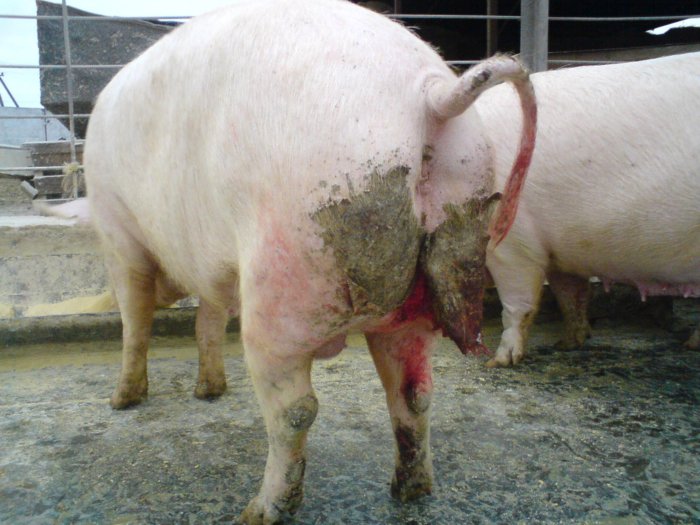
Diarrhea as a sign
- Bowel dysfunction – constipation or diarrhea.
- Loss of appetite.
- The animal looks tired, depressed.
- With severe poisoning and the acute course of the disease, vomiting, tremor of the limbs, convulsions may appear, salivation increases.
Treatment is aimed at relieving symptoms and intoxication of the body. First of all, you need to remove contaminated food from the diet. To remove toxins, sorbents, laxatives (if the animal has constipation) and astringents (for diarrhea) are used. The pig is transferred to a dietary diet. In the first days of treatment, only liquid talkers and plenty of fluids are offered from food.
Attention! Grain or hay affected by a fungal infection darkens, smells of dampness or rot. Having found traces of mold, you need to completely replace the feed base. Grain and hay should be dried before storage and stored in a well ventilated area.
Salt poisoning
If a pig eats a lot of foods high in salt, it can get sick. This condition is extremely dangerous, as it entails disruption of the cardiovascular system, kidneys and other vital organs. Salt poisoning symptoms:
- Strong thirst.
- Refusal to eat.
- Slow or increased heart rate.
- Dilated pupils.
- Convulsions.
- Coma.
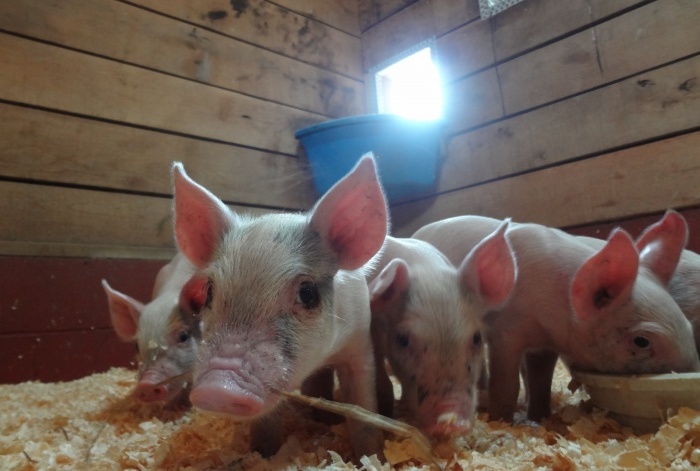
dilated pupils
When such manifestations of the disease are detected, it is necessary to act quickly. The pig is given a dropper with calcium chloride, and calcium gluconate is administered intramuscularly. The animal should receive drink, but at first in a limited amount.
Attention! Excessive consumption of salt by a pig leads to death. The lethal dose of this substance is more than 125 grams per day.
Blockage of the esophagus
When swallowing large fragments of food or foreign bodies, in some cases an acute condition occurs – blockage of the esophagus. It may be complete or partial. This condition causes a stop in the work of the intestines, the accumulation of gases in the stomach, intoxication. Consider the characteristic symptoms of blockage of the esophagus:
- The animal stops eating.
- With partial closure of the esophageal tube, the pig drinks and does not refuse liquid food.
- The mumps is worried, she stretches her neck, tries to burp the foreign body.
- In the future, signs of intoxication, depression, shortness of breath, cough appear.
Treatment involves the immediate removal of an object stuck in the esophagus. This is done manually or with a probe (depending on the intended location of the foreign body). If it is impossible to extract it by any means, they resort to surgical intervention. Next, the pig is fed a digestible liquid food until the intestines are restored.
Reference. To avoid this situation, the farmer should offer the animals chopped food, as well as clean the stall and barnyard. The feed base should be checked for the presence of foreign bodies in it.
Stomatitis
Inflammation of the oral mucosa is called stomatitis. It occurs when mechanical or chemical damage to the palate, gums or buccal region. When a bacterial or fungal infection enters the wound, a focus of inflammation develops. If no action is taken, over time, the inflammatory process will spread throughout the oral cavity. Symptoms of the disease:

When eating, the pig chews gently, champs
- Loss of appetite.
- When eating, the pig chews gently, champs.
- Salivation.
- Ulceration in the mouth.
- Unpleasant smell from the mouth.
- The animal drinks a lot.
Treatment includes the treatment of the mouth with disinfecting solutions – irrigation with furatsilin, a solution of soda or potassium permanganate. A good effect is achieved when using herbal decoctions that help relieve inflammation – chamomile, sage.
Reference! Symptoms of stomatitis are similar to manifestations of an infectious disease – rabies. Before starting treatment, it is necessary to call a veterinarian for an accurate diagnosis.
Catarrh of the stomach
Inflammation of the stomach lining is called catarrh. The disease occurs for various reasons, but nutritional error is of decisive importance. Eating poor-quality feed, drinking contaminated water causes the predominance of pathogenic microflora in the stomach, which leads to an inflammatory process. Often, helminthic invasions, infectious diseases and stomatitis are related to the occurrence of the disease.
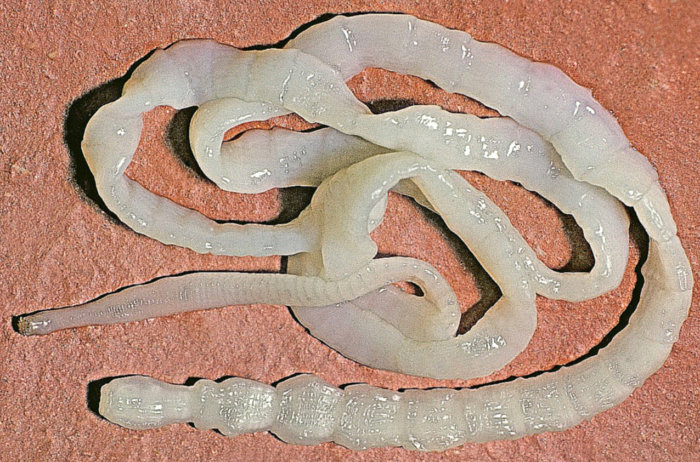
Helminthic invasions
Symptoms:
- Poor appetite.
- Diarrhea alternating with constipation.
- Stool with mucus impurities.
- Change in taste preferences.
- Saliva is thick.
- Anxiety.
- Unpleasant smell from the mouth.
- Weight loss.
Treatment includes diet. The animal is not fed for a day, then they are offered talkers, mucous decoctions, boiled root crops. If the diarrhea does not stop, give astringent drugs or herbal decoctions.
Avitaminosis
Lack of vitamins in the body is called avitaminosis. Usually, the lack of substances is detected in the cold season, after the end of the pasture season. Avitaminosis leads to disturbances in the functioning of internal organs, changes in the composition of the blood and its quality indicators, affect weight gain, and cause growth retardation. Avitaminosis is often accompanied by a variety of pathologies:
- Visual impairment.
- Dermatitis.
- Digestive disorder.
- Nervous disorders.
- Skeletal deformity.
- Weakened immunity.
If symptoms of a lack of vitamins in the body are detected, treatment is carried out. The animal is introduced into the diet with food that contains the necessary substances, and drugs are also used to compensate for the lack of vitamins – A, E, K, C, D (depending on the identified type of beriberi).
Poisoning poisonous plants
While grazing, pigs can eat poisonous herbs. Plants containing poisons sometimes end up in feed prepared by farmers. The most dangerous for pigs are such herbs and flowers – buttercups, horsetail, dope, milestones, rapeseed and hellebore.
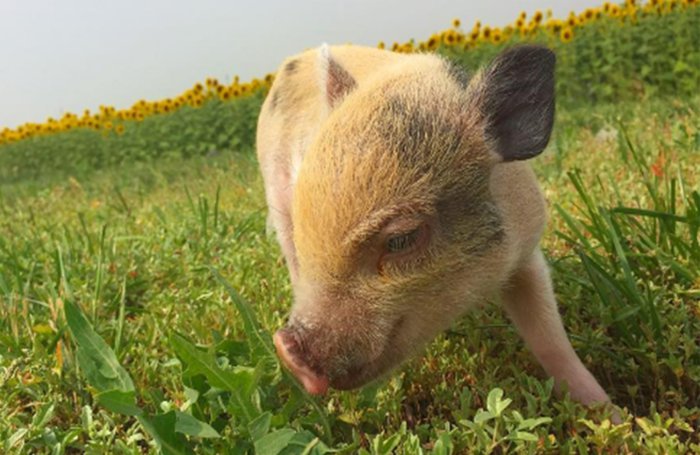
Pigs can eat poisonous herbs
Symptoms of poisoning appear abruptly:
- Oppression, weakness.
- Diarrhea with blood, vomiting.
- The pupils are dilated.
- Muscle tremors, convulsions.
- Decrease in temperature.
- Paralysis, coma.
Treatment of such poisoning includes gastric lavage, the introduction of antidotes, the giving of sorbents, mucous talkers, oils, in order to prevent the absorption of poisons into the blood. In severe cases, cardiac stimulation may be needed.
Bone dystrophy
Bone dystrophy most often affects sows while in the stall. This disease develops due to a lack of phosphorus and calcium, vitamins D and A in the body of the animal. The cause of the development of the disease is a poor diet, feeding sour food, as well as insufficient walking in the fresh air.
At first, the manifestations of the disease are not so obvious. You may notice that the bristles have lost their luster, began to fall out, the skin is dry, the animal’s taste preferences are changing, it looks weakened and emaciated. In the future, the situation is aggravated:
- Lameness appears.
- The joints thicken.
- It is difficult for the animal to move, it often lies.
- The hooves are deformed.
- The last tail vertebrae soften and dissolve.
- Frequent fractures are possible.
- The pig is rapidly losing weight.
The treatment of bone dystrophy is aimed at filling the lack of phosphorus, calcium, vitamin D and A. It is important to diversify the diet, pay attention to walking the animal, in summer, spring and autumn to provide access to sunlight to the place where the pig is kept. It is necessary to let a sick pig out on the street even in winter, at least for a short time.
Pulmonary diseases
Pigs often suffer from respiratory diseases – pneumonia, bronchitis, bronchopneumonia and others. The causes of morbidity are a decrease in immunity and improper maintenance – crowding, unheated rooms, lack of bedding, drafts.
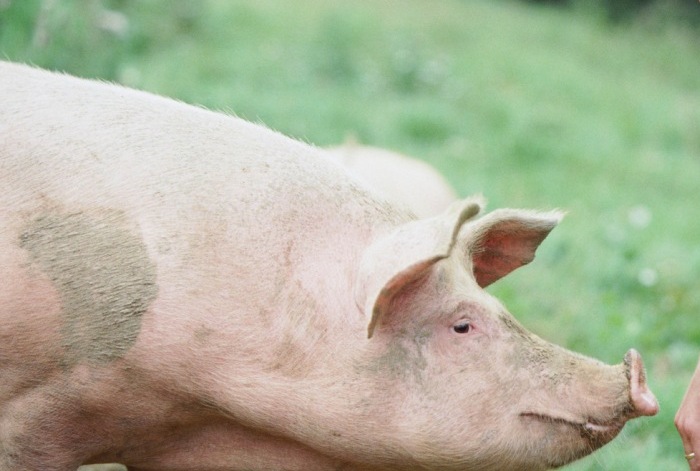
Pigs often suffer from respiratory diseases
What are the symptoms of diseases of the lungs and bronchi:
- Temperature increase.
- Cough.
- Discharge from the nose is mucous or with the inclusion of pus.
- Loss of appetite.
- Diarrhea.
- Wheezing.
- Dyspnea.
- Rapid heart rate.
Treatment of pulmonary diseases is always carried out in a complex manner. The main role is given to antibiotics, thanks to which it is possible to stop the development of pathogenic microflora in the lungs and bronchi. Pigs are inhaled, warmed up, given mucolytic agents. Of particular importance is the work aimed at increasing the body’s resistance. For this, immunoglobulins and vitamins are used. A sick animal is kept in a warm, well-ventilated room with an optimal level of humidity.
Rickets
Rickets is characterized by softening and deformation of bone tissue. The disease develops slowly, it affects young animals mainly after weaning. At risk are piglets that were born in autumn and winter, when there is a lack of sunlight and the diet becomes scarce. Rickets occurs when there is an imbalance of calcium and phosphorus in the body.
Symptoms of rickets in pigs:
- Loss of appetite.
- Lethargy.
- Growth retardation.
- Change in taste preferences – eating bedding, plaster.
- Difficulties in movement, lameness.
- Convulsions.
- Thickening of the joints, deformation of the bones.
The treatment of rickets is aimed at eliminating the causes that caused the development of the disease and replenishing the lack of calcium, phosphorus and vitamin D. Feed containing these substances is introduced into the diet of piglets, they are given fish oil, oil solutions of vitamins A, E, D. Chopped chalk must be added to the feed , bone and fish meal, mineral salts, ground shells. Weakened piglets are irradiated with ultraviolet light.
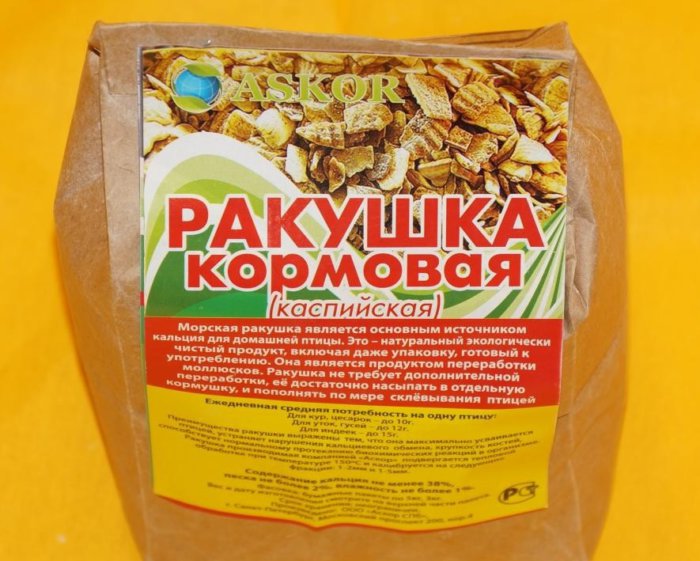
ground shells
Dyspepsia
This disease affects newborn piglets in the first days of their life. It is characterized by an intestinal disorder. The causes of the disease have deep roots – often they lie in the improper maintenance of pregnant pigs, malnutrition during this period. Other causes of dyspepsia in piglets are untimely feeding with colostrum after birth, feeding cold milk or taken from a mother suffering from mastitis.
Reference. Dyspepsia is always closely related to the immunity of newborn piglets, which is formed even in the mother’s womb.
Disease symptoms:
- Newborns are oppressed, weakened.
- There is no appetite.
- Feces liquefies, involuntarily comes out of the anus.
- Dehydration – eye sockets sunken.
- The temperature is within normal limits.
- On examination, a slowing of the heart rate is detected due to thickening of the blood.
Treatment is carried out urgently and includes a set of measures aimed at replenishing fluid in the body, increasing the immune status, as well as combating gram-negative microflora in the intestine. Piglets are given antibiotics or antimicrobial drugs, they are placed under healthy sows, they are fed, if necessary, gastric lavage is carried out. To combat diarrhea, astringent herbal decoctions or medicines are used.
Non-communicable diseases are no less dangerous than infectious ones. If you are late with treatment, you can lose a sick individual, and therefore incur losses. Farmers should be attentive to animals and provide them with timely assistance, and even better, direct all their efforts to the prevention of such diseases.


